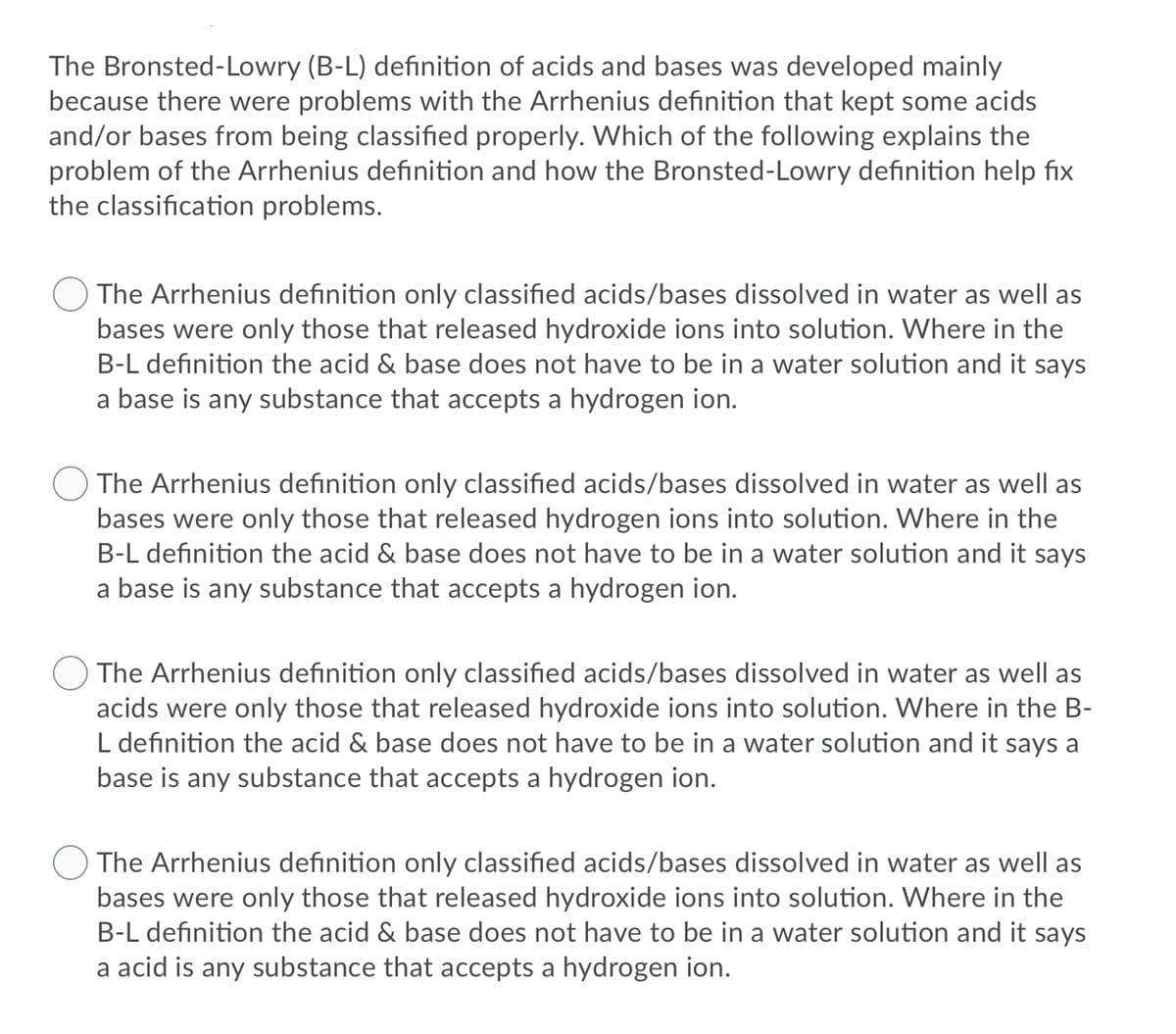The Bronsted-Lowry (B-L) definition of acids and bases was developed mainly because there were problems with the Arrhenius definition that kept some acids and/or bases from being classified properly. Which of the following explains the problem of the Arrhenius definition and how the Bronsted-Lowry definition help fix the classification problems. The Arrhenius definition only classified acids/bases dissolved in water as well as bases were only those that released hydroxide ions into solution. Where in the B-L definition the acid & base does not have to be in a water solution and it says a base is any substance that accepts a hydrogen ion. The Arrhenius definition only classified acids/bases dissolved in water as well as bases were only those that released hydrogen ions into solution. Where in the B-L definition the acid & base does not have to be in a water solution and it says a base is any substance that accepts a hydrogen ion. The Arrhenius definition only classified acids/bases dissolved in water as well as acids were only those that released hydroxide ions into solution. Where in the B- L definition the acid & base does not have to be in a water solution and it says a base is any substance that accepts a hydrogen ion. The Arrhenius definition only classified acids/bases dissolved in water as well as bases were only those that released hydroxide ions into solution. Where in the B-L definition the acid & base does not have to be in a water solution and it says a acid is any substance that accepts a hydrogen ion.
Ionic Equilibrium
Chemical equilibrium and ionic equilibrium are two major concepts in chemistry. Ionic equilibrium deals with the equilibrium involved in an ionization process while chemical equilibrium deals with the equilibrium during a chemical change. Ionic equilibrium is established between the ions and unionized species in a system. Understanding the concept of ionic equilibrium is very important to answer the questions related to certain chemical reactions in chemistry.
Arrhenius Acid
Arrhenius acid act as a good electrolyte as it dissociates to its respective ions in the aqueous solutions. Keeping it similar to the general acid properties, Arrhenius acid also neutralizes bases and turns litmus paper into red.
Bronsted Lowry Base In Inorganic Chemistry
Bronsted-Lowry base in inorganic chemistry is any chemical substance that can accept a proton from the other chemical substance it is reacting with.

Trending now
This is a popular solution!
Step by step
Solved in 3 steps









